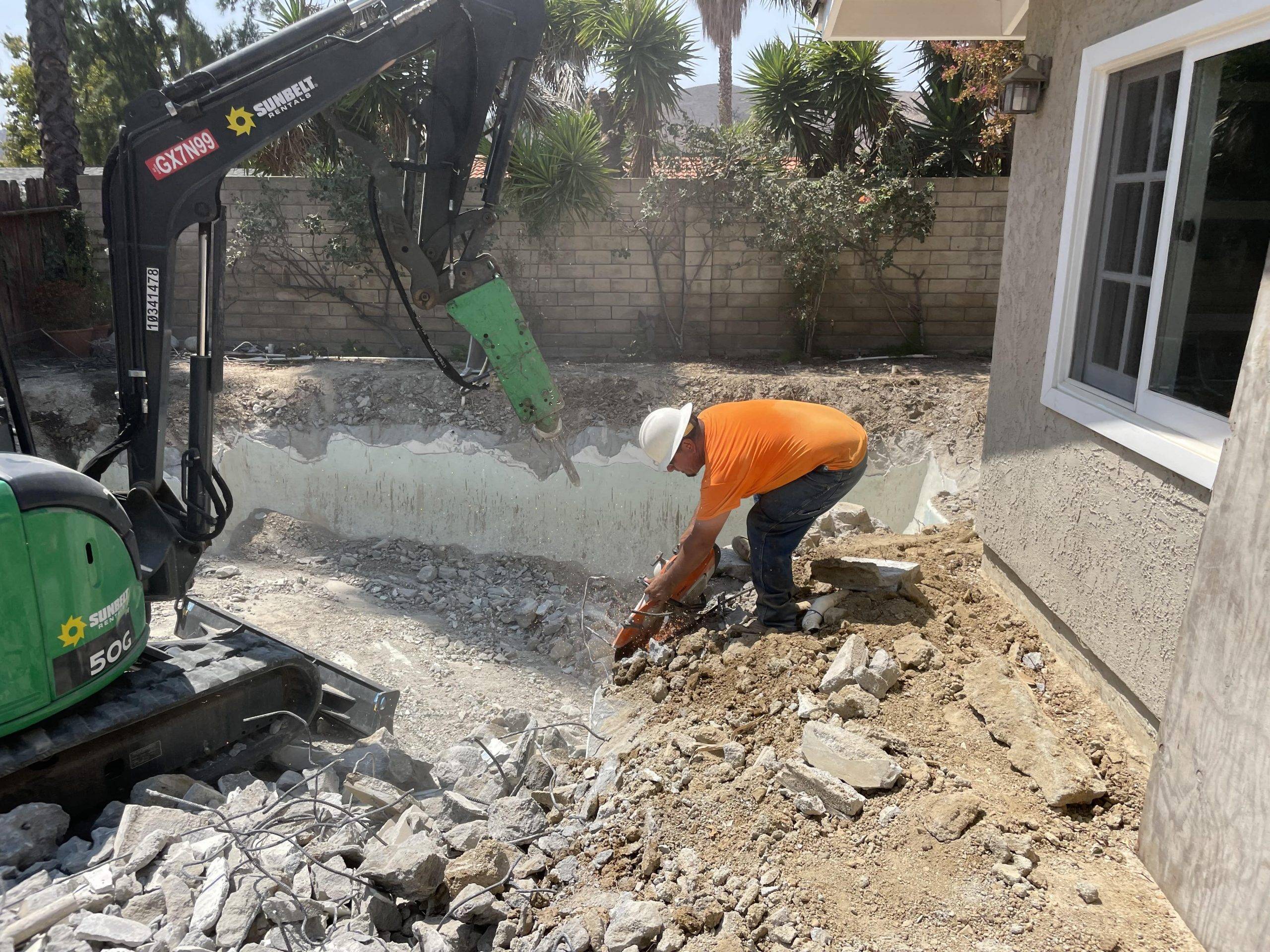
You can free up space by filling a pool. The cost of filling a pool will vary depending on how big it is, what material was used, and where it is located. Before making a choice, it is important you weigh all of the options.
A fiberglass pool can be filled with partial fill. This means that some of the dirt will be removed, but the rest will be filled in. This will make it easier to sell the area and build a new home. Partial filling will take less material to complete than full removal. The type of swimming pool you have, and the soil in your area will impact the amount of material you need. It is important to order the correct backfill materials for your area.
Concrete pools require more materials to fill in. If your pool is 12x24 feet and has a 6ft depth at the end, you will need to use more backfill material than you would if it had a 4ft wide end. This can be expensive, so you need to be sure to calculate how much your pool will require before you begin.

Concrete pools will take more work to remove than vinyl liners. A higher price will also be required for the removal. This could include demolition fees, removal costs, and installation charges for a new pool.
A pool can also be removed yourself. This can help you to save money. You will need an excavator and rubber tracks. You might be able do it in a weekend. The job can be outsourced to a professional company. A skilled worker can complete the project within a few working days. If you do the removal yourself, you should factor in the cost of permits and other expenses.
You must inform potential buyers if you have any evidence of a pool. It can be difficult to sell a home that has a pool. You can also find it very costly to maintain. It will cost you money to remove and install the pool heater, pool pump, capping lines, and other equipment. You might need to buy a brand new pool deck as well as any plumbing, electrical or other equipment that is needed to make the pool more functional.
Permitting and landscaping are also necessary. You should know how long it will take to complete your project. The cost of the materials can be expensive, so you should be sure to compare different types of materials before ordering them. A licensed structural engineer can be hired to complete the job. This will lower your chance of finding a hole or bog in ground.

The average cost of removing an existing pool varies between states and regions. You will want to calculate your costs before contacting a demolition company. Pools can be an important part of your backyard. It is therefore vital that you keep them in good shape.
FAQ
Can I do the whole renovation myself?
If you are able to do it yourself, why not pay someone else?
You may love DIY but there will come a time when you can't do it all by yourself. You might not be able control many of the variables.
For example, if you live in an old home, you might find that the wiring is outdated and you would need to hire a qualified electrician to make sure that your electrical system is safe and reliable.
Be aware that structural damage might be too costly for you to repair during the renovation.
You may not have the proper tools to complete the job. You will need a special tool called the plumber's snake to clean clogged pipes if you plan to install a kitchen sink.
You will also need a licensed plumber to work on your plumbing project.
You need to be able to do the job before you take on any large tasks.
Ask your friends and family for help if you're unsure if the job is possible.
They can give you advice on what steps you need to take and where you can go to learn more about the subject.
Can you live in a house during renovation?
Yes, you can live in your house while you renovate it.
Can you live in a house and have renovations ongoing? The length of construction takes will determine the answer. If the renovation takes less than two months, then you can live in your house while it is being built. You can't live there if your renovation project takes more than two months.
It is important that you do not live in your home during major construction. You could also suffer from noise pollution and dust caused by the heavy machinery used on the job site.
This is especially true if you live in a multi-story house. If this happens, the sound and vibration caused by the construction workers can cause significant damage to your home and contents.
As I mentioned before, while your home is being remodeled, you'll have to manage the inconveniences of living in temporary shelters. This means you won’t have the same amenities as your own home.
For example, you will not be able to use your washing machine and dryer while they are undergoing repair. In addition to the unpleasant smells of chemicals and paint fumes, you will have to endure the noises made by workers.
All these factors can lead to stress and anxiety among you and your family members. It is therefore important to plan ahead so that you don't end up feeling overwhelmed by the situation.
It is important to research before you start renovating your house. This will help you avoid costly mistakes down the road.
A reputable contractor can also be of assistance to you in order to make sure everything runs smoothly.
What are my considerations when purchasing a new house?
Make sure you have enough cash saved to pay closing costs before buying a new house. If you don't have enough cash on hand, then you might want to think about refinancing your mortgage.
Statistics
- Design-builders may ask for a down payment of up to 25% or 33% of the job cost, says the NARI. (kiplinger.com)
- The average fixed rate for a home-equity loan was recently 5.27%, and the average variable rate for a HELOC was 5.49%, according to Bankrate.com. (kiplinger.com)
- A final payment of, say, 5% to 10% will be due when the space is livable and usable (your contract probably will say "substantial completion"). (kiplinger.com)
- It is advisable, however, to have a contingency of 10–20 per cent to allow for the unexpected expenses that can arise when renovating older homes. (realhomes.com)
- Rather, allot 10% to 15% for a contingency fund to pay for unexpected construction issues. (kiplinger.com)
External Links
How To
How to renovate an older house
To begin with, I would suggest that you should first determine what type of renovation project you want to undertake. This could be anything from updating your kitchen appliances to completely renovating the house.
Once you have decided what type of renovations you want to undertake, the next step is to determine how much money it will cost. You might find that you don't actually have enough funds to cover the full cost of the entire project. If this is the case, then you need to make some tough decisions about which areas of the house you can afford to improve and which ones you can't.
There are many things to remember before you begin work if you have decided to do renovations. You need to make sure you have the right permits for your project. Also, check to see if you need planning permission in order to do certain types work. To add extensions to your home or make other changes, you might need building consent.
Before you begin any work on your home, check with your local council to make sure they don't require any permits. Also, check whether you need planning permission for each part of the house that you intend to renovate. Finally, if you're carrying out any major works such as installing a new roof, you might need to contact your insurance provider to make sure that you have adequate cover in place.
After obtaining all permits, the next step is to select the right tools and materials. There are many options, so take the time to thoroughly research them. Most people use wallpaper paste, paint, flooring, tiles and carpets for their renovation projects.
When choosing these items, remember to look at the quality of the product. Good quality products will last longer and be more cost-effective. It is important to buy the right amount of anything when buying. It is important not to buy too much, as you may end up wasting valuable resources or having to throw out large quantities of material. Instead, make sure you only purchase what you really need.
Once you've decided on the materials you want to use, you must plan where you'll keep them while you are working on the property. If you're remodeling a large portion of the house, you may need to rent storage space to store your materials until you're ready for them to be returned inside. You might also consider asking family and friends to move your belongings around.